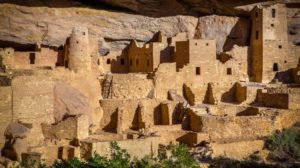HOPI LCR TRIAL WEEKLY REPORT : Week 2

Week 2 : Trial Report Update of Little Colorado River – Adjudication Trial
Summary of Week 1/2:
- Several members of the tribal government, including the Chairman and members of the Water and Energy Committee were present.
- This trial is on past and present water uses. Future water rights are set for a December 2019 trial; and water rights on the new Hopi ranch lands south of I-40 will be set for trial in 2020 or after.
- Hopi Tribe presents evidence of evidence of tribal history, culture, religion, hydrology and past water uses
- Objectors: Navajo Nation, the State Land Department, the Little Colorado River Association, Salt River Project and the City of Flagstaff want to limit the trial to what Hopi currently uses by way of water, putting off all evidence of tribal history, culture, religion, hydrology and past water uses to the next trial in December 2019.
- Historical evidence pertaining to establishment of Hopi sovereignty dating back to 1848 was presented by Hana Norton, a U.S. Government historian.
- Neil Blandford, a hydrologist from Daniel B. Stephens & Associates presented water resources : surface waters from the washes, and the aquifers on the reservation and uses.
September 18th – Week 1
Source: Office of Hopi Tribe
The Hopi Little Colorado River water rights trial began September 11, 2018.
Several members of the tribal government, including the Chairman and members of the Water and Energy Committee were present.
The trial began with opening statements by the lawyers. The Hopi water
rights trial has been split up. This trial is on past and present water uses. Future water rights are set for a December 2019 trial; and water rights on the new Hopi ranch lands south of I-40 will be set for trial in 2020 or after.
The opening statements highlighted differences between the Hopi Tribe and the objectors who are the Navajo Nation, the State Land Department, the Little Colorado River Association, Salt River Project and the City of Flagstaff. The Hopi Tribe intends to introduce evidence of tribal history, culture, religion, hydrology and past water uses. The objectors want to limit the trial to what Hopi currently uses by way of water, putting off all evidence of tribal history, culture, religion, hydrology and past water uses to the next trial in December 2019.
As witnesses were called, and not without much argument between the lawyers, the Court appeared willing to allow Hopi to present testimony of its history, culture, religion and water use and drew the line on truly future water claims.
The first witness was Hana Norton, a U.S. Government historian. Her testimony was limited to the time of U.S. sovereignty, which starts with the Treaty of Guadalupe Hildago in 1848 when Mexico transferred sovereignty to the United States. The Hopi Reservation was created in 1882, and Ms. Norton testified the Reservation was created to protect Hopi from encroachment from the Mormons, the Navajos, and other white settlers brought into the region by the railroad. She reviewed historical BIA records in which government officials concluded the lack of surface water represented a major challenge to the Tribe’s economic advancement. She concluded that the federal government’s policy toward Hopi vacillated between moving Hopi to water (by asking the Hopi to move to the Little Colorado River) or bringing water to the Hopi on the Mesas.
Ms. Norton gathered records from the national archives, including several historical records of the Irrigation Service of the BIA. These records show that the incising of the arroyos began in the latter half of the nineteenth century.
Previously, the washes flowed into broad alluvial fans between and below the Mesas providing for flood water flows over Hopi farms. With the creation of deep gullies channeling the water through the plains, water to Hopi farms was diminished. The BIA constructed several projects, like dam and wash spreaders, to bring the waters back over Hopi lands. The BIA also did construction projects like larger concrete dams, but many of them failed over time.
The second trial witness was Neil Blandford, a hydrologist from Daniel B. Stephens & Associates who has worked for the Hopi Tribe for twenty years. He testified about the water resources on the reservation: surface waters from the washes, and the aquifers on the reservation. Essentially, he testified that the only good drinking water comes from the N aquifer (except for where there is naturally occurring arsenic!). The T aquifer provides for many of the springs on and around the Mesas, and the D aquifer provides for much of Hopi livestock.
Below is a figure showing the extents of the aquifers on the Hopi Reservation, which Mr. Blandford used in court to discuss the groundwater resources on the reservation.

Mr. Blandford also testified about historical pumping of water for the villages from the N aquifer, and challenges to drinking water from contamination in the Moenkopi area and in naturally occurring arsenic in the First and Second Mesa wells.
The week ended with the U.S. Government calling Chris Banet, who is the BIA official overseeing Indian Water Right trials and settlements in the Southwest.
His testimony will continue in the second week of trial. The Hopi lawyers are strongly encouraging Hopi Tribal members to come down and be present at the trial.
September 5th – Initial Court Reports
Resource:
Updated Soon..





